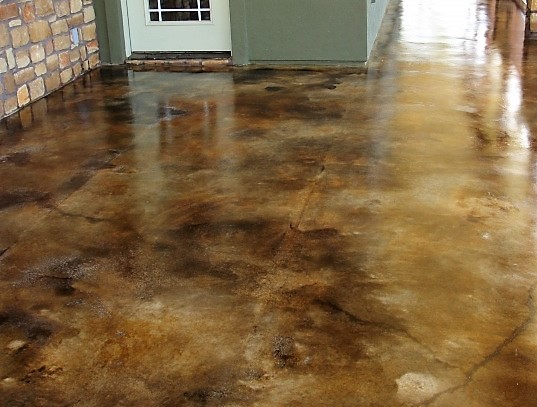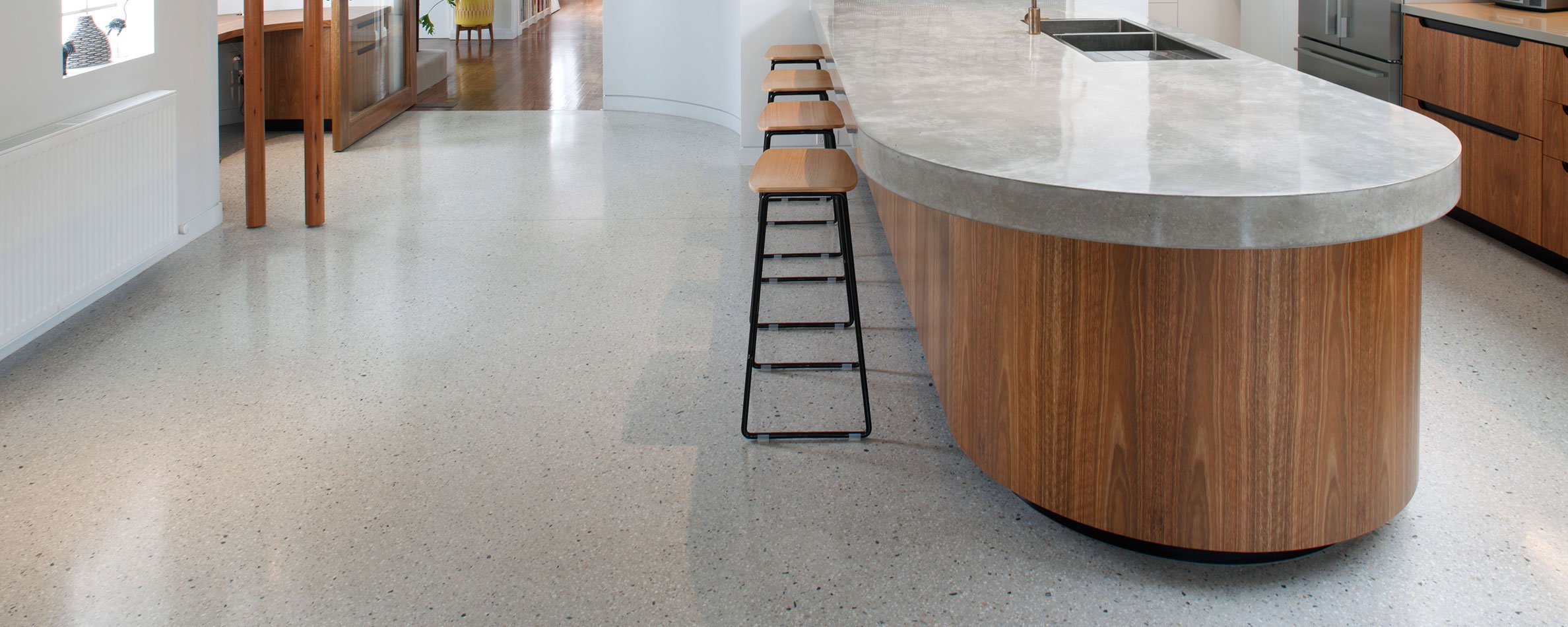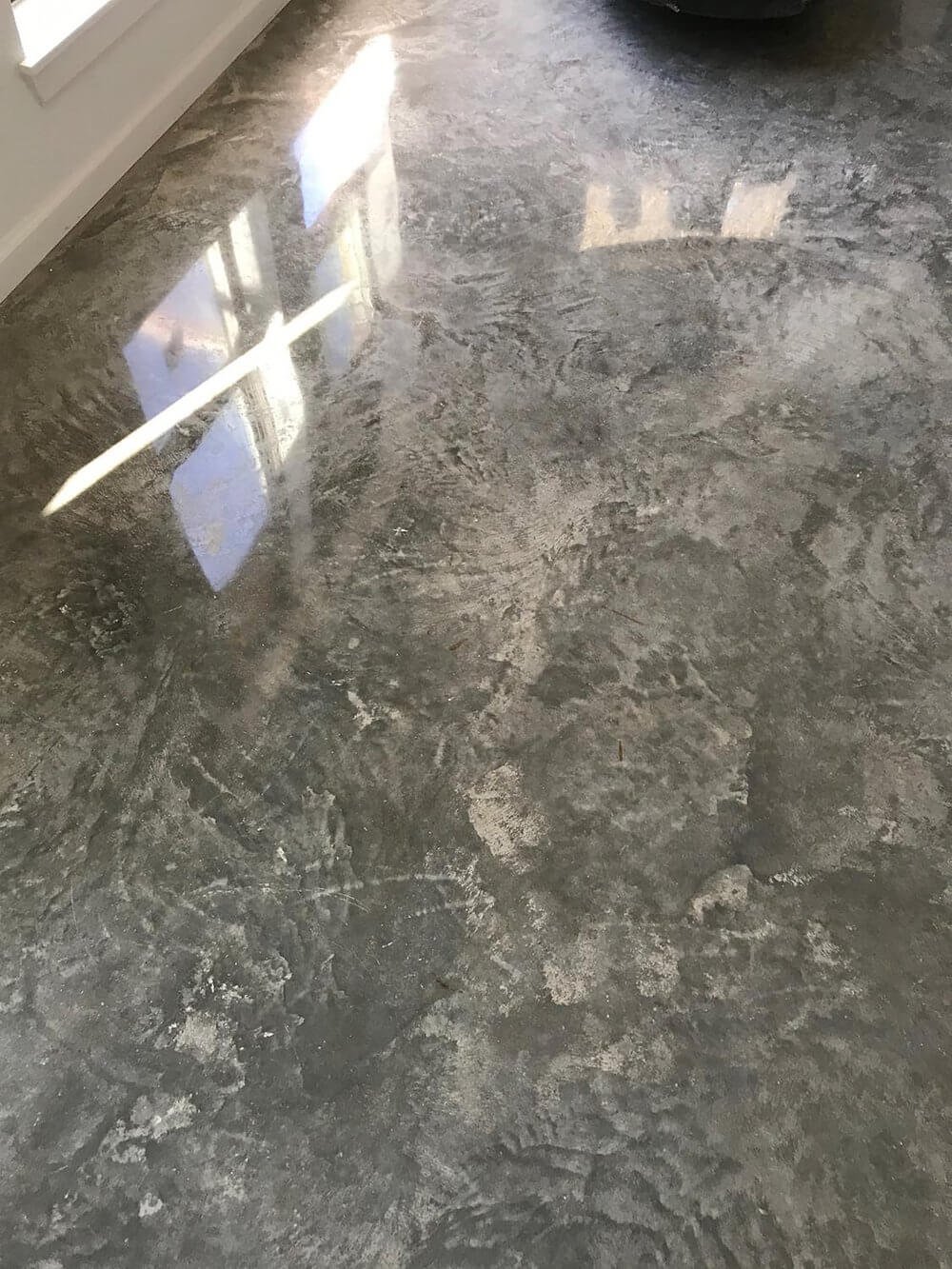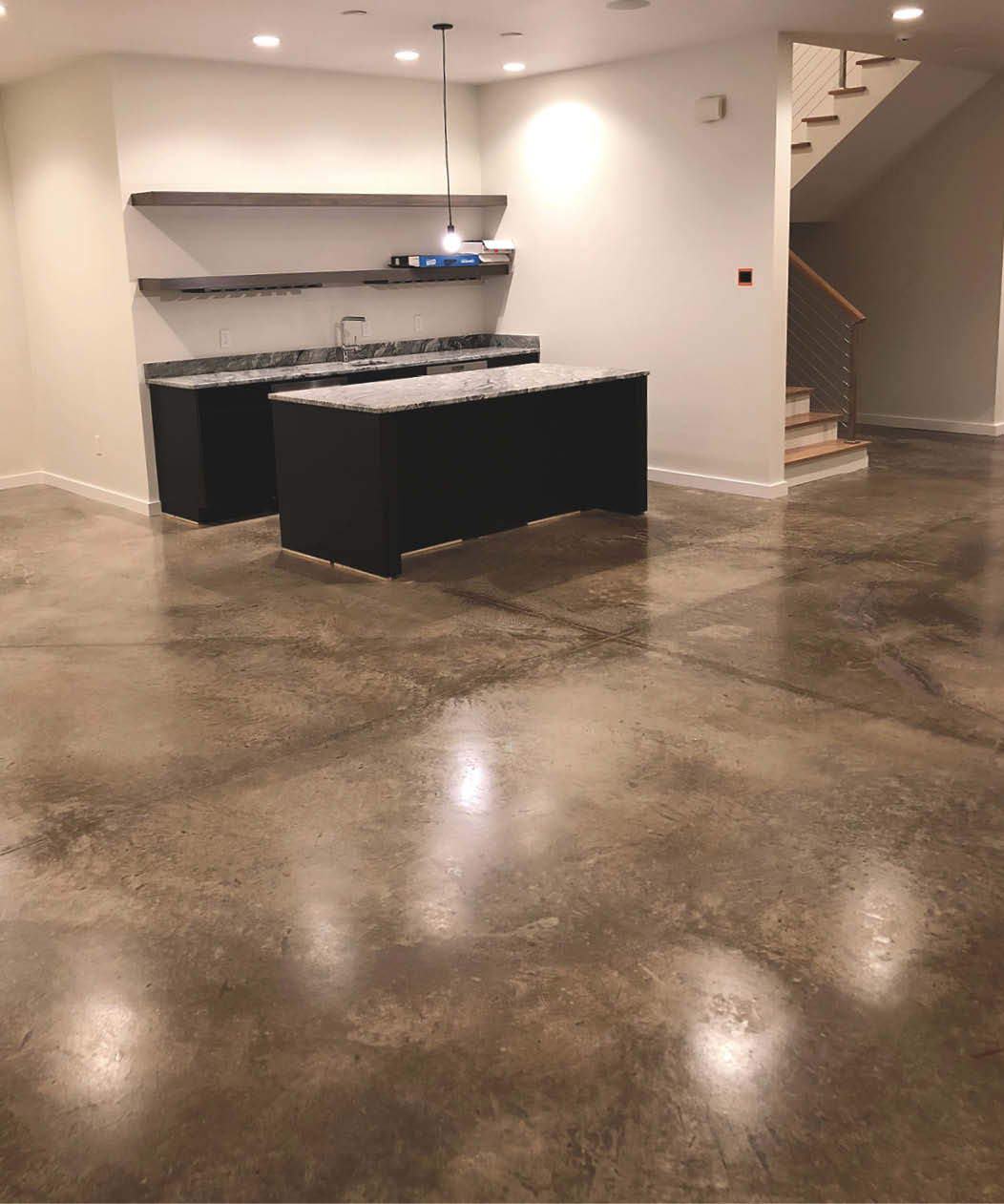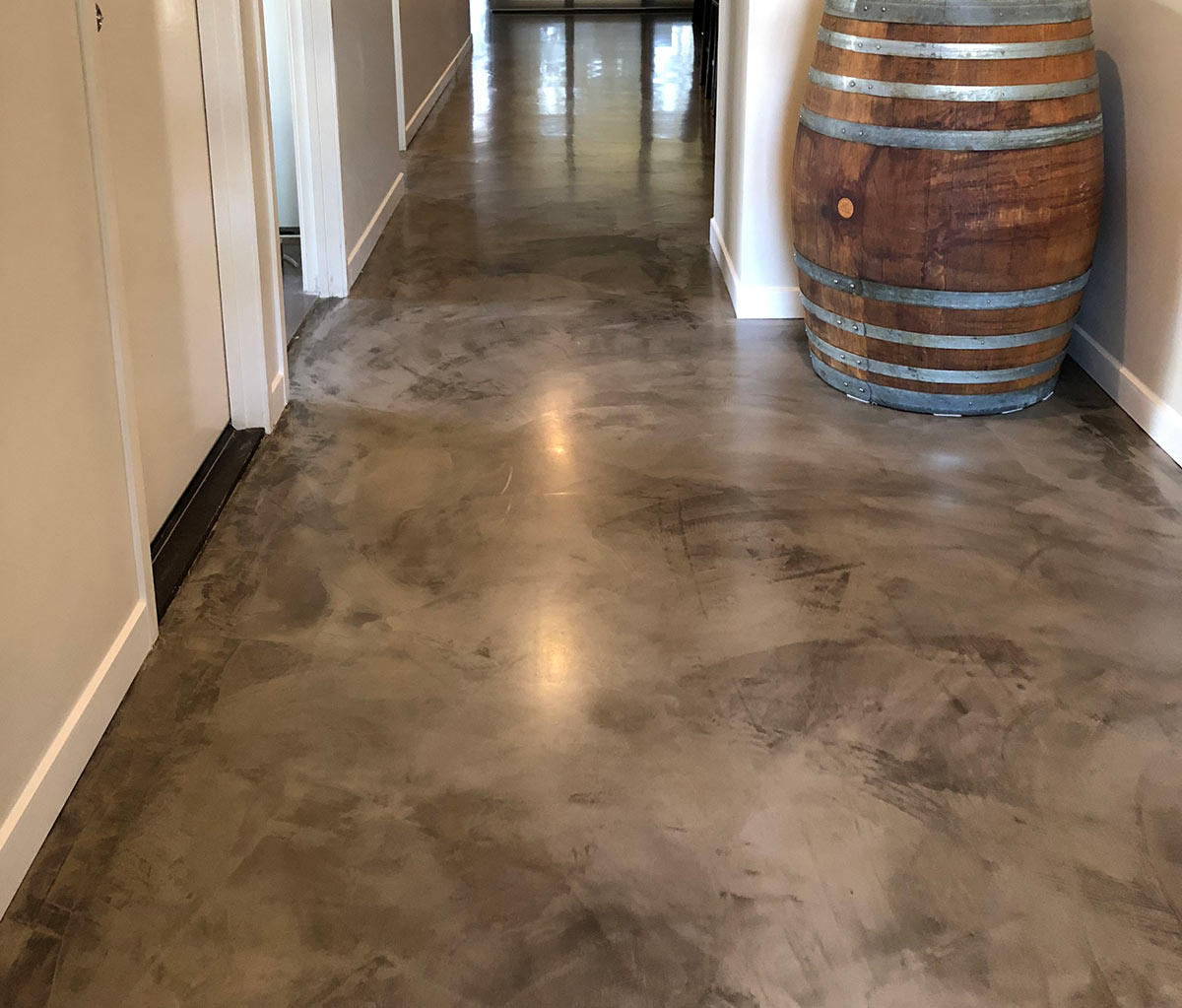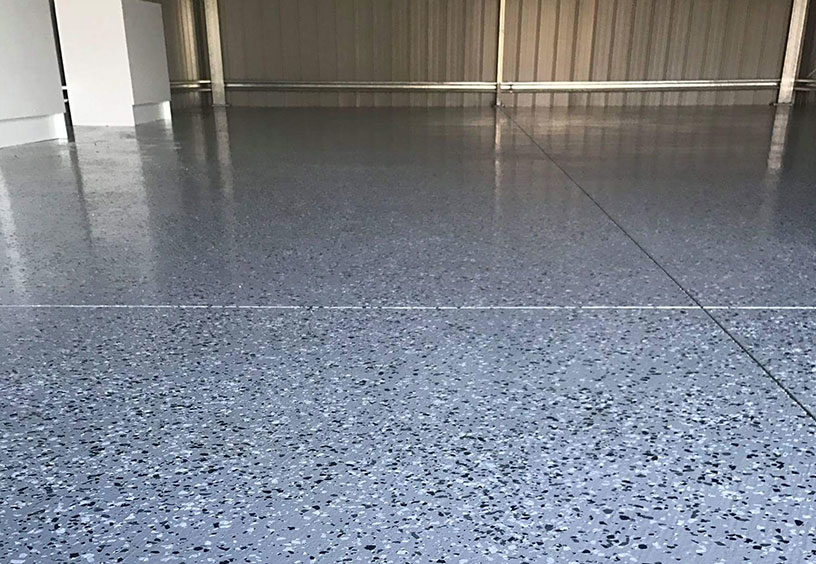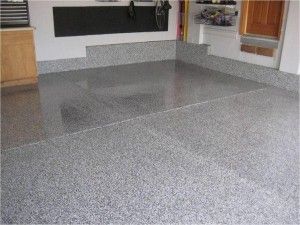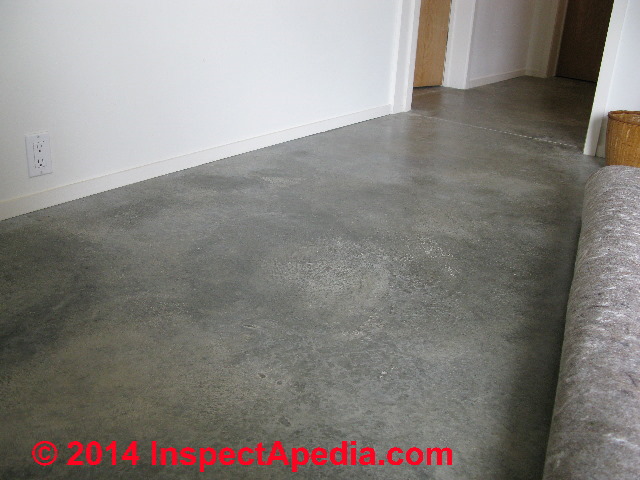Introduction to Concrete Floor Finishes
Concrete floor finishes have revolutionized interior and exterior design by combining functionality with modern aesthetics. Once confined to industrial settings, concrete floors now shine in homes, offices, retail spaces, and even upscale establishments. They offer a unique blend of strength, versatility, and style that’s hard to ignore. Let me walk you through why these finishes have become a go-to option for so many people.
- Concrete Finishes are Incredibly Versatile: One of the most striking aspects of concrete finishes is their adaptability. Whether you’re aiming for a rustic, minimalist, or high-end polished look, there’s a finish that fits your vision. I’ve seen concrete work beautifully in both sprawling commercial spaces and intimate residential areas. Its ability to mimic wood, stone, or tile makes it an ideal choice for almost any design theme.
- They Work in Any Space: From kitchens and living rooms to garages and patios, concrete floors excel in diverse settings. In residential spaces, they create a seamless flow between indoors and outdoors. Meanwhile, in commercial spaces, they handle heavy foot traffic with ease. Their industrial origin gives them unparalleled toughness, while modern finishes add elegance.
- Durability That Stands the Test of Time: One thing I admire about concrete finishes is their resilience. Unlike wood or carpet, which can deteriorate over time, concrete maintains its integrity for decades. Even in high-traffic areas, these floors resist cracking, chipping, and warping when installed and maintained correctly.
- Customization Options Abound: Gone are the days when concrete meant dull gray slabs. Today, finishes can be stained, stamped, or polished to create bespoke designs. You can choose earthy tones for warmth, bold colors for impact, or neutral shades for modern minimalism.
- Cost-Effective and Eco-Friendly: Compared to traditional flooring materials, concrete is surprisingly budget-friendly. Plus, its eco-friendly nature is worth noting. Since it utilizes existing concrete slabs, it minimizes waste and reduces the need for additional materials, making it an environmentally conscious choice.
- Easy Maintenance and Longevity: With proper sealing and occasional cleaning, concrete floors require little upkeep. They resist stains, moisture, and even scratches, making them perfect for busy households or commercial spaces. This low-maintenance nature also contributes to their cost-effectiveness in the long run.
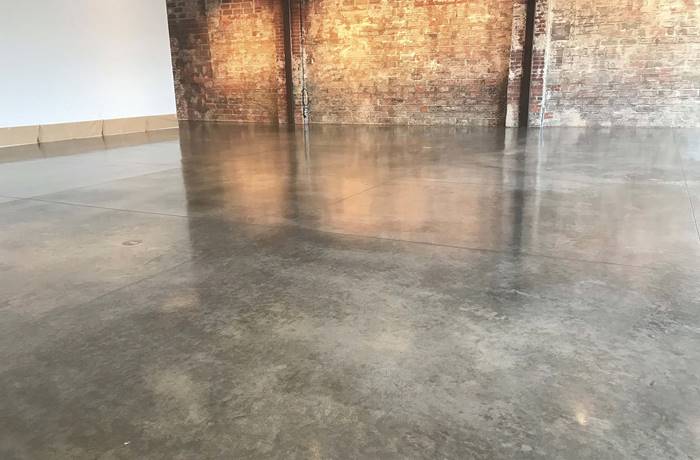
Types of Concrete Floor Finishes
Concrete floors offer a wide array of finishes, each tailored to specific aesthetic and functional needs. From polished elegance to rugged textures, these finishes make it easy to match your vision with the right look. In this article, I’ll guide you through the most popular types of concrete floor finishes and their unique characteristics.
Polished Concrete: Sleek and Modern
Polished concrete is the ultimate choice for those seeking a glossy, refined look. I love how it reflects light, making spaces feel brighter and more open. This finish is achieved by grinding the surface to a smooth shine and sealing it for added durability. It’s perfect for modern homes, showrooms, and offices.
Stained Concrete: A Splash of Color
Stained concrete offers a creative twist by adding vibrant or earthy tones to the surface. Acid-based stains create a marbled effect, while water-based stains provide a more consistent color. I’ve seen stained concrete floors that mimic natural stone, giving a luxurious vibe without the hefty price tag.
Stamped Concrete: A Textured Touch
If you want the look of brick, slate, or wood without the high cost, stamped concrete is a fantastic alternative. This finish involves pressing patterns into freshly poured concrete. It’s often used outdoors for patios, driveways, and walkways, but it also works indoors for unique, textured flooring.
Epoxy Coated Floors: Durable and Vibrant
Epoxy coatings are highly durable and available in a range of colors and finishes, from high gloss to metallic effects. They’re ideal for garages, basements, and industrial spaces. I admire epoxy finishes for their resistance to chemicals, stains, and abrasions, making them one of the toughest options.
Textured and Broom-Finished Concrete
For outdoor areas or spaces where slip resistance is crucial, textured or broom-finished concrete is a great option. This technique involves dragging a broom across the surface to create subtle grooves, enhancing grip while maintaining a clean look.
Exposed Aggregate: A Rustic Appeal
Exposed aggregate finishes reveal the natural stones within the concrete, creating a textured and visually appealing surface. This finish is perfect for outdoor patios or pool decks where a rustic, natural look is desired.
Each of these finishes offers its charm and benefits, so choosing the right one depends on your space and style preferences. Whether it’s the glossy polish of modern concrete or the rustic texture of exposed aggregate, the possibilities are endless.
Choosing the Right Finish for Your Space
Selecting the perfect concrete floor finish can be a daunting task, but it doesn’t have to be. With so many options available, the key is to identify the finish that best suits your space’s aesthetic, functionality, and long-term maintenance needs. Let me walk you through some factors to consider so you can make a confident decision.
Consider the Space’s Purpose
Every room or area serves a unique function, and the floor finish should complement it. For example, a polished finish might be perfect for a modern living room, while a durable epoxy coating would work better for a garage. If you’re designing an outdoor patio, stamped or textured finishes provide the slip resistance and weather durability you’ll need.
Match the Aesthetic Style
Your chosen finish should align with the overall design of your space. For a contemporary, minimalist look, polished or stained concrete works wonders. On the other hand, if you’re going for a rustic or industrial vibe, exposed aggregate or stamped finishes can add character and depth.
Factor in Maintenance Needs
Not all finishes are created equal when it comes to maintenance. If you prefer a low-maintenance option, polished or epoxy-coated concrete is your best bet. These finishes resist stains, scratches, and moisture. Meanwhile, stamped or textured concrete might require more care to prevent dirt buildup in crevices.
Think About Durability
Durability is critical, especially in high-traffic or heavy-use areas. I’ve found epoxy coatings to be one of the toughest finishes, making them ideal for garages and warehouses. For outdoor spaces, a sealed and weather-resistant finish like exposed aggregate or broom-finished concrete is essential to withstand the elements.
Budget Considerations
Concrete floor finishes can vary widely in cost, so it’s essential to consider your budget. Basic stained or broom finishes are typically more affordable, while intricate stamped patterns or epoxy coatings can be pricier. Investing in a high-quality finish may save money in the long run by reducing maintenance and replacement costs.
Personal Preferences and Customization
Finally, let your taste guide you. Concrete finishes are incredibly customizable, so take advantage of color stains, patterns, and textures to create a unique design. Whether you want a bold statement floor or something subtle, there’s a finish to match your vision.
By keeping these factors in mind, you can narrow down your options and choose a finish that enhances both the beauty and functionality of your space. The right finish will not only look great but also serve your needs for years to come.
Installation Process and Techniques
The installation of concrete floor finishes is a meticulous process that requires precision, skill, and the right tools. Understanding the steps involved can help you appreciate the craftsmanship and ensure the project is done correctly. Let’s break it down into manageable steps so you know what to expect during installation.
Preparing the Surface
Every successful concrete finish starts with a well-prepared surface. The floor must be clean, level, and free from debris or cracks. I’ve learned that surface preparation often includes grinding or patching to ensure a smooth and stable base for the finish. Proper preparation sets the stage for a flawless final result.
Choosing and Applying the Finish
The type of finish you’ve selected will dictate the next steps. For polished concrete, the installer will use diamond grinders to achieve the desired level of shine. Stained finishes require the application of acid- or water-based stains, while stamped finishes involve pressing patterns into freshly poured concrete.
Adding Color or Patterns
If your chosen finish includes color or design elements, this step is where the magic happens. For instance, stained or dyed finishes require careful application to achieve even, vibrant tones. For stamped concrete, molds or templates are used to create intricate patterns that mimic stone, brick, or tile.
Sealing the Surface
Once the finish is applied, sealing is crucial to protect it from wear and tear. Sealants enhance the durability of the floor by preventing stains, moisture, and scratches. I always recommend opting for a high-quality sealant to ensure the finish lasts for years.
Curing and Drying
Concrete finishes need time to cure and dry before they’re ready for use. Depending on the finish, this process can take anywhere from a few days to a couple of weeks. During this time, it’s essential to avoid heavy foot traffic or placing objects on the floor to prevent damage.
Final Touches and Inspection
After the curing process, the floor undergoes a final inspection to ensure the finish meets the desired standard. Any minor imperfections are corrected, and the floor is cleaned and polished for a professional, flawless look.
The installation process may seem complex, but it’s this attention to detail that ensures the longevity and beauty of concrete floor finishes. Whether you hire professionals or take a DIY approach, understanding these steps is the key to achieving excellent results.
Benefits of Concrete Floor Finishes
Concrete floor finishes offer a unique combination of beauty and practicality, making them one of the most versatile flooring options available today. Whether you’re renovating your home or designing a commercial space, these benefits might just convince you to choose concrete finishes.
Exceptional Durability
One of the standout features of concrete floors is their durability. Unlike wood or carpet, which can wear down over time, concrete can handle heavy traffic and withstand scratches, stains, and moisture. With proper maintenance, these floors can last for decades.
Easy Maintenance
Concrete floor finishes are incredibly easy to maintain. I love how a simple sweep and mop can keep them looking fresh. Polished and sealed surfaces resist stains and dirt, making them an excellent option for busy households or commercial areas.
Cost-Effective Flooring
When compared to hardwood, tile, or natural stone, concrete finishes are often more budget-friendly. Even high-end options like polished or stained concrete are relatively affordable, especially considering their longevity and low upkeep costs.
Eco-Friendly Choice
Concrete floors are also an environmentally friendly option. Since they often utilize existing concrete slabs, they reduce the need for additional materials. Additionally, finishes like stains and sealants have low environmental impact, especially if you choose non-toxic, water-based products.
Endless Customization Options
One of my favorite things about concrete finishes is how customizable they are. You can choose from a variety of colors, patterns, and textures to create a truly unique design. From sleek polished surfaces to rustic stamped patterns, the options are endless.
Improved Energy Efficiency
Concrete floors can help regulate indoor temperatures by absorbing heat during the day and releasing it at night. This thermal mass effect can lower energy costs and make your space more comfortable, particularly in climates with large temperature swings.
Concrete floor finishes aren’t just practical—they’re a stylish and sustainable flooring option that fits nearly any space or budget. With so many benefits, it’s no wonder they’re becoming a popular choice for homeowners and designers alike.
Maintenance and Care for Concrete Floors
One of the reasons concrete floor finishes are so popular is their low-maintenance nature, but that doesn’t mean they’re completely care-free. Proper upkeep is essential to keep your floors looking as beautiful and functional as the day they were installed. In this article, I’ll share practical tips to maintain and care for concrete floors effectively.
Regular Cleaning is Key
Concrete floors need regular cleaning to maintain their appearance and functionality. Dust and debris can act like sandpaper on the surface, especially for polished finishes. I recommend sweeping or vacuuming daily to prevent scratches. A damp mop with a mild cleaner works wonders for deeper cleaning.
Seal and Reapply Protective Coatings
Sealing your concrete floor is a vital step in preserving its finish. Sealants protect against stains, moisture, and wear, but they don’t last forever. Depending on foot traffic, I suggest reapplying a sealant every two to three years. This step helps maintain the integrity and look of your floor.
Avoid Harsh Cleaning Agents
While concrete is durable, it’s not invincible. Avoid using acidic or abrasive cleaners, as they can degrade the sealant and damage the finish. Instead, stick to pH-neutral cleaners specifically designed for concrete surfaces. Trust me, the right cleaner makes all the difference.
Address Spills Immediately
Even though sealed concrete resists stains, spills should be cleaned up as soon as possible to avoid long-term discoloration. I always keep a microfiber cloth or mop handy for quick cleanups. For tougher stains, a gentle scrub with a soft brush usually does the trick.
Prevent Damage with Rugs and Mats
High-traffic areas and entryways are more prone to wear. Placing rugs or mats in these spots can help protect your concrete floors from dirt and scratches. Plus, they add a layer of comfort and style to the space.
Polish or Buff for Extra Shine
For polished concrete floors, occasional buffing or polishing can restore their original luster. I’ve found that using a high-speed floor buffer with a polishing pad keeps the surface shiny and smooth. This process not only enhances aesthetics but also extends the life of the finish.
With just a little effort and the right techniques, maintaining concrete floors is straightforward and rewarding. Following these tips will ensure your floors stay beautiful and durable for years to come.
Common Mistakes to Avoid with Concrete Floor Finishes
Concrete floors may be durable, but improper selection, installation, or maintenance can compromise their beauty and longevity. Avoiding common mistakes can save you time, money, and frustration. I’ll share the most frequent errors people make with concrete floor finishes and how to sidestep them.
Skipping Surface Preparation
One of the biggest mistakes I’ve seen is neglecting proper surface preparation before applying a finish. Uneven, dirty, or cracked surfaces can lead to poor adhesion, uneven coloring, or weak sealing. Always ensure the surface is clean, level, and repaired before starting the finishing process.
Choosing the Wrong Finish for the Space
Not all finishes are suited for every environment. For example, polished concrete might look stunning in a living room but could become slippery in a wet outdoor area. Carefully consider the purpose and conditions of the space before selecting a finish.
Ignoring Moisture Issues
Concrete is porous and susceptible to moisture. Failing to address underlying moisture problems can result in mold, discoloration, or bubbling under the finish. I always recommend performing a moisture test and using moisture barriers or sealants when necessary.
Using Low-Quality Sealants
Skimping on sealants is a mistake that often leads to regret. Low-quality sealants wear out quickly, leaving the surface vulnerable to stains and damage. Investing in a high-quality sealant may cost more upfront, but it will save you money in maintenance and repairs over time.
Overlooking Routine Maintenance
Even though concrete floors are low-maintenance, completely ignoring their care can result in dull, stained, or damaged surfaces. I’ve seen many floors lose their appeal simply because they weren’t cleaned or resealed regularly. A little effort goes a long way in preserving their beauty.
Attempting DIY Without Proper Knowledge
While it’s tempting to save money with a DIY approach, concrete finishing requires skill and expertise. Mistakes during application—like uneven staining or poor polishing—are difficult to fix. If you’re unsure about the process, hiring a professional is the safer choice.
Avoiding these pitfalls will ensure that your concrete floors remain stunning and durable. A bit of planning, attention to detail, and consistent care will help you get the most out of your investment.
Concrete Floor Natural Finish – OzGrind Polished Concrete Brisbane
Concrete Floor Finishes – Universal Services Group
Best Application For Indoor Concrete Floor Finishes Concrete
concrete floor matte finishes
Poured Finish Flooring Choices for Use Over Concrete Slabs
Related Posts:
- Acid Wash Concrete Floor Colors
- Concrete Floor Thickness For A Garage
- Concrete Floor For Bathroom
- Interior Concrete Floor Ideas
- Kitchen Stained Concrete Floors
- Concrete Floor Tile Thickness
- How To Stain Concrete Floors DIY
- DIY Concrete Floor Grinding
- Concrete Floor Damage
- Faux Stained Concrete Floors
